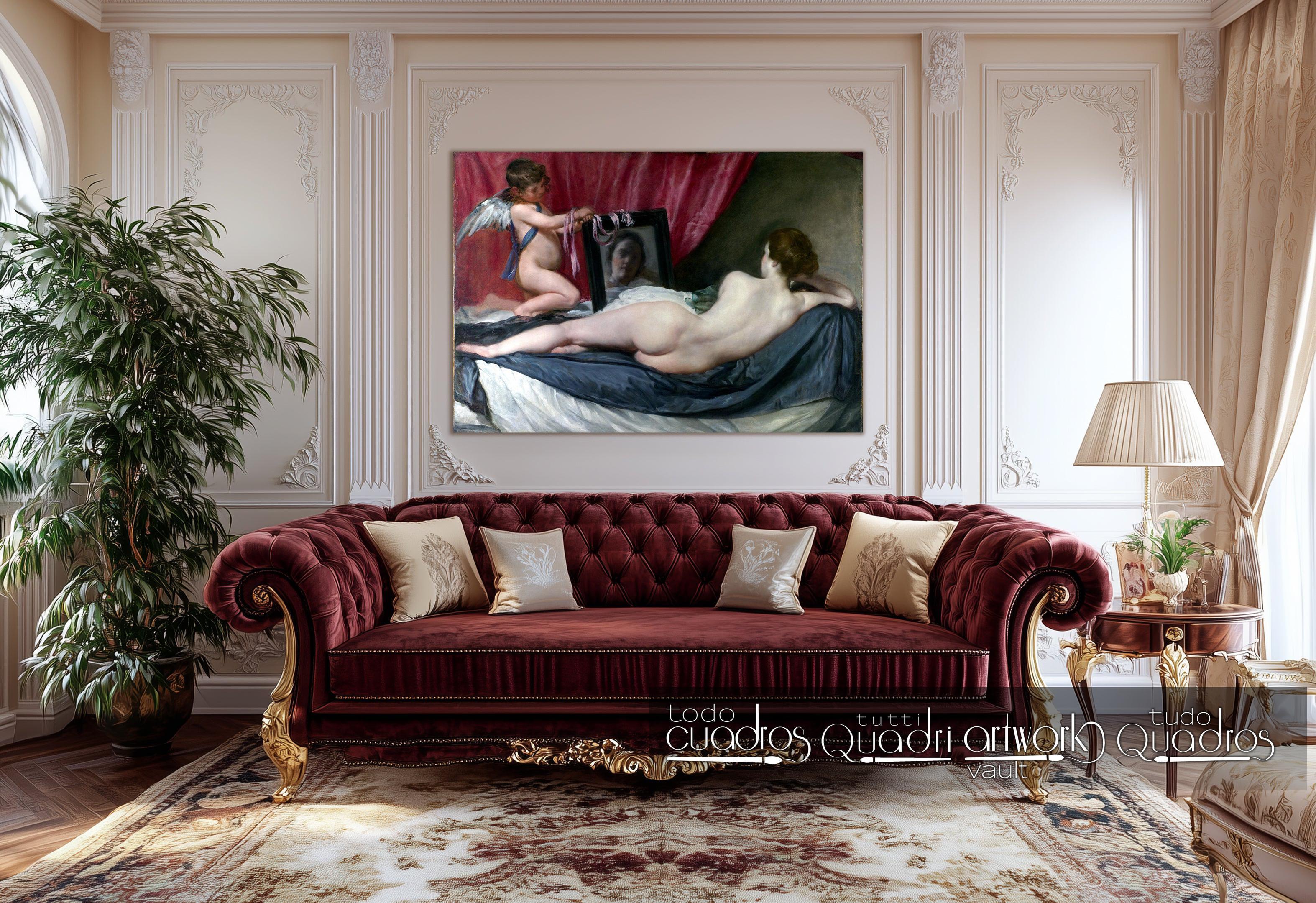

The Toilet of Venus ('The Rokeby Venus'), Velázquez
- Oil on linen canvas
- 100% hand-painted
- Reproduction painting
- Available to purchase online
- See quality
- Delivery to the UK
- Money-back guarantee
- Customer reviews
| Author: | Diego Velázquez |
|---|---|
| Original Title: | La Venus del espejo |
| Type: | Painting |
| Style: | Baroque |
| Medium | Oil |
| Support: | Canvas |
| Year: | 1649 |
| Subject: | Classical Mythology |
| Located: | National Gallery, Londres. |
It was created for private use, thus avoiding the moral and religious conflicts that such works provoked in Golden Age Spain. The scene draws from classical mythology: Venus, the goddess of beauty, reclines with natural elegance on a bed of gray and pink fabrics, gazing at her reflection in a mirror held by her son Cupid. The goddess’s posture, turned away from the viewer, blends sensuality and modesty; her beauty is revealed not through exposure of the body, but through the delicacy of light, the harmony of form, and the ambiguity of the reflected gaze. The soft and enigmatic reflection of her face in the mirror shifts the viewer’s attention toward the contemplation of the body as an ideal of earthly beauty. Velázquez’s Venus thus embodies the transition from Amor Agapē, the contemplative form of love, to Amor Eros, the expression of desire and visual pleasure.
This canvas, known as “The Rokeby Venus”, is the only surviving female nude by the painter. Velázquez displays an absolute mastery of diffused light and tonal modeling, reaching one of the highest achievements of Baroque naturalism. The composition is organized through gentle diagonals that guide the viewer’s gaze from the curves of the body toward the mirror, integrating figure and space into a perfect visual unity. The restricted palette—pearl gray, pink, brown, and white—creates an intimate and silent atmosphere. The skin is built up through translucent glazes that soften the contours, producing a luminous and lifelike texture, while the folds of the fabrics are rendered with freer, more vibrant brushwork. The contrast between the anatomical clarity of the body and the blurriness of the reflection introduces a dialogue between reality and representation, body and appearance, anticipating a surprising modernity in Velázquez’s art.
Choose options




